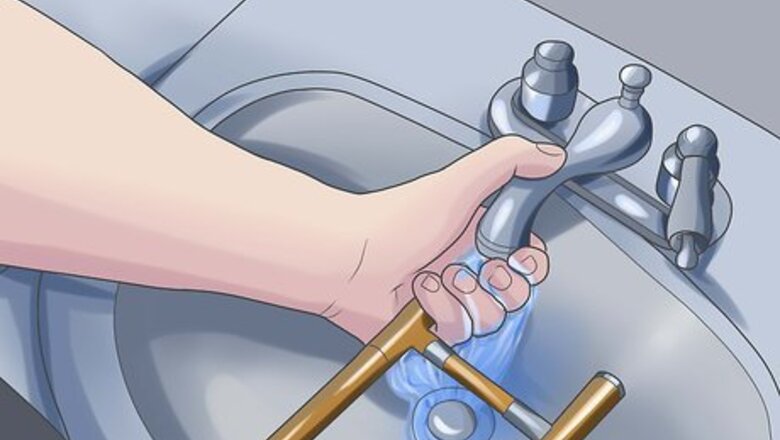
views
- Disassemble the trombone. To deep clean the instrument, soak the parts in lukewarm water. Otherwise, wipe down the parts with a soft rag.
- Use a cleaning rod or a “snake” to remove excess grease, oil, and moisture from the outer and inner slides.
- Dry off all components with a soft rag and reassemble your trombone. Apply lubricant as you normally would.
Using a Bathtub
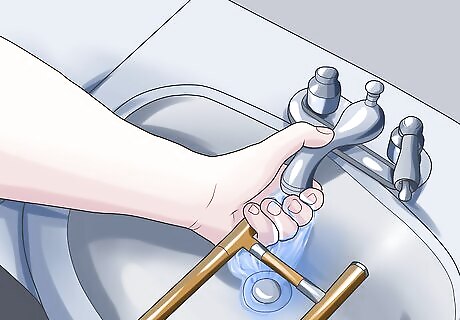
Fill a bathtub with lukewarm water. Do NOT use hot water. It helps to place a dampened towel or cloth at the bottom of the bathtub to avoid dents or scratches. Hot water can actually damage the lacquer. Lukewarm water will be just fine.
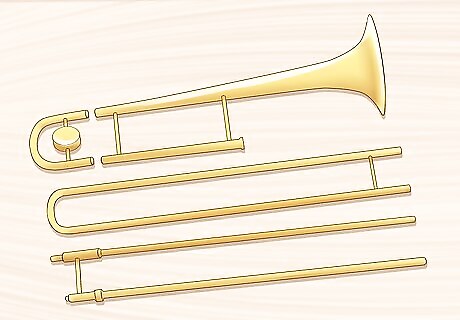
Disassemble the trombone into its two main parts, the slide and the bell section. Next, take the outer slide off the inner slide. You should now have three parts. Then remove the tuning slide (or both if you have a Bb/F trigger trombone). Now you should have four (or five) parts in the water. Include the mouthpiece and you will have five (or six.)
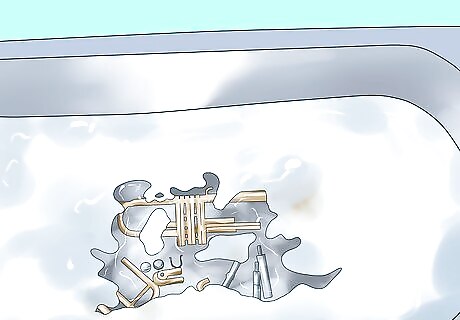
Place all the parts in the bathtub of lukewarm water and let them soak. *Gently handle the parts at all times.
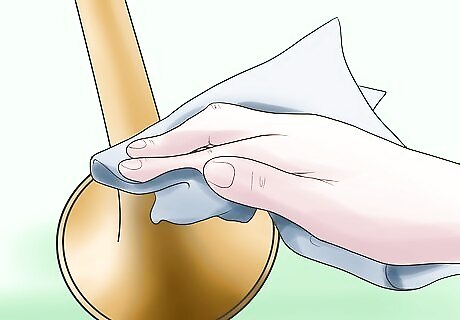
Once the parts have soaked for five to ten minutes, stand the bell section up away from the other parts and gently rub the bell with the cotton rags on the outside and as much as you can on the inside. Rinse the bell with cold water. Use the beach towel and dry the bell as much as possible. Set it aside in a safe place where it will not be knocked over and let it finish by air drying.
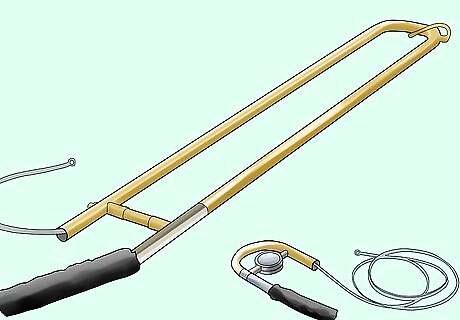
Take the outer slide and run the snake back and forth through inside of it. Make sure the outer slide is filled with water. Do this for about 1 to 2 minutes on each side of the slide. Often junk will come out into the water. That's good! Keep working at it for at least a minute on each side. Using a clean stream of cold water, rinse the inside and outside of the outer slide. Dry with a beach towel and let it air dry with the bell.
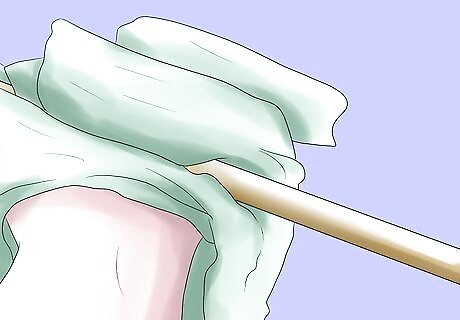
Pick up the inner slide and using a clean cotton rag, wipe it firmly but gently up and down the outside. Next, take the snake and clean the inside of the inner slide as before with the outer slide. Rinse and dry and place it with the other parts.
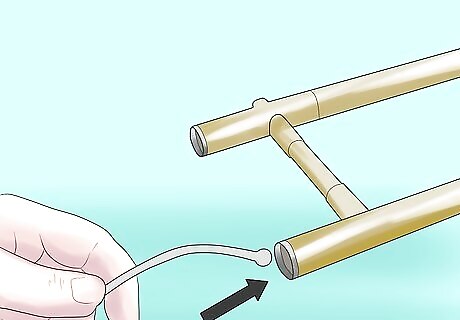
Use the snake to clean the inside of the tuning slide. Often the tuning slide grease will eventually gum on the part of the tuning slide that fits into the bell section. To clean this, use a penetrating oil like WD-40. Spray the tuning slide with the penetrating oil and let it sit for a few minutes, before wiping away as much "gunk" as possible. If the horn has not been cleaned in a while, you may have to repeat this process several times.
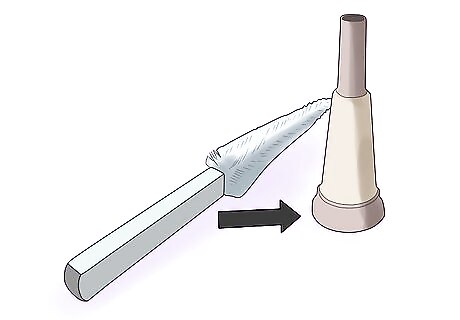
Take the mouthpiece brush and push it back and forth into the shank (the part that fits into the trombone) of the mouthpiece. This will only take about 30 seconds or so. Rub the mouthpiece with a cotton rag, then dry it. If the mouthpiece gets gunk in the cup or shank, it will greatly disrupt the airflow when playing, so do not neglect your mouthpiece.

Finishing off. After the horn has completely "air dried" you will have a nice clean trombone. You will have to reapply a slide lubricant to the slide, then apply tuning slide grease to the tuning slides. Use both sparingly -- a little goes a long way. Reinsert the tuning slide(s) into the bell section. Wipe any extra grease away with a clean cloth or cotton rag. Now your set to clean your trombone and remember clean well and clean often.
Using a Rag

Disassemble the trombone by unscrewing the bell portion from the slide and removing the mouthpiece.
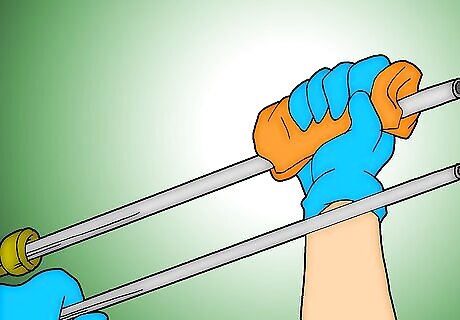
Remove the outer slide and wipe off any excess grease, oil or moisture from the inner slides with a soft rag. Be careful not to bend or dent either slide in the process. Be gentle!

Use a cleaning rod or a “snake” (a flexible rubber coated metal wire with a small brush on both ends), clean out any excess grease, oil or moisture from the insides of the outer and inner slides. If using a cleaning rod, be careful not to jam the rod into the bottom of the slide. If you are rough, you risk denting the crook at the end of the slide.

Remove the main tuning slide from the bell portion and clean the inside with a “snake”.
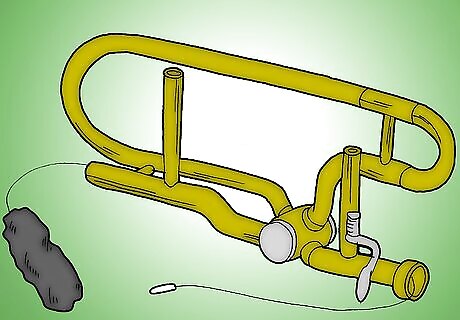
Do the same for F attachment tuning slide if your trombone has the F attachment.

If absolutely necessary, disassemble the rotary valve for the F attachment, rinse off each piece and wipe off excess oil or grease. However, this stage of the cleaning should really be handled by a trained instrument technician, as any sort of scratch or dent in the valve will adversely affect the playability of the horn.

Rinse all trombone components with warm water (NOT HOT, see warnings) in a shower or bath. Special attention should be given to the rotary valve, water key (or spit valve), and the outer and inner slides.
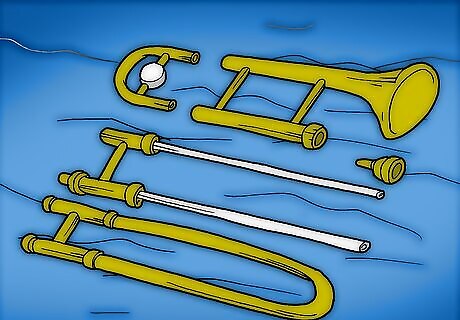
Dry off all components with a soft rag, making sure that no large pockets of water remain in any of the tubing or in the rotary valve.

Apply necessary grease to the tuning slides and attach them to the bell portion of the instrument.
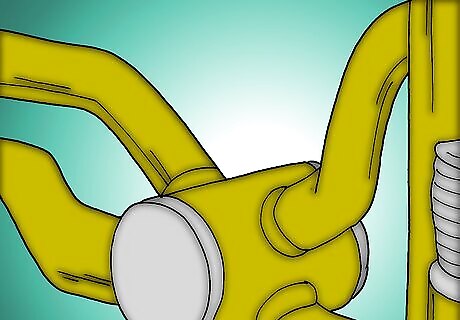
Reassemble the rotary valve and apply necessary oils. Most of the oil should be applied by dripping it in through the pipe where the bell section and playing slide meet, though a few drops may be applied to the rotary valve directly.

Reassemble inner slide and outer slide and attach it to the bell section of the trombone.
Apply necessary slide grease or oils to the inner slide.
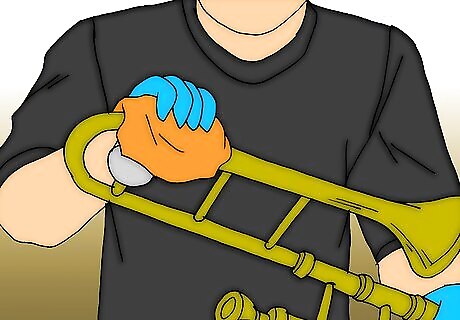
Wipe down the entire outside of the trombone using a soft rag.


















Comments
0 comment